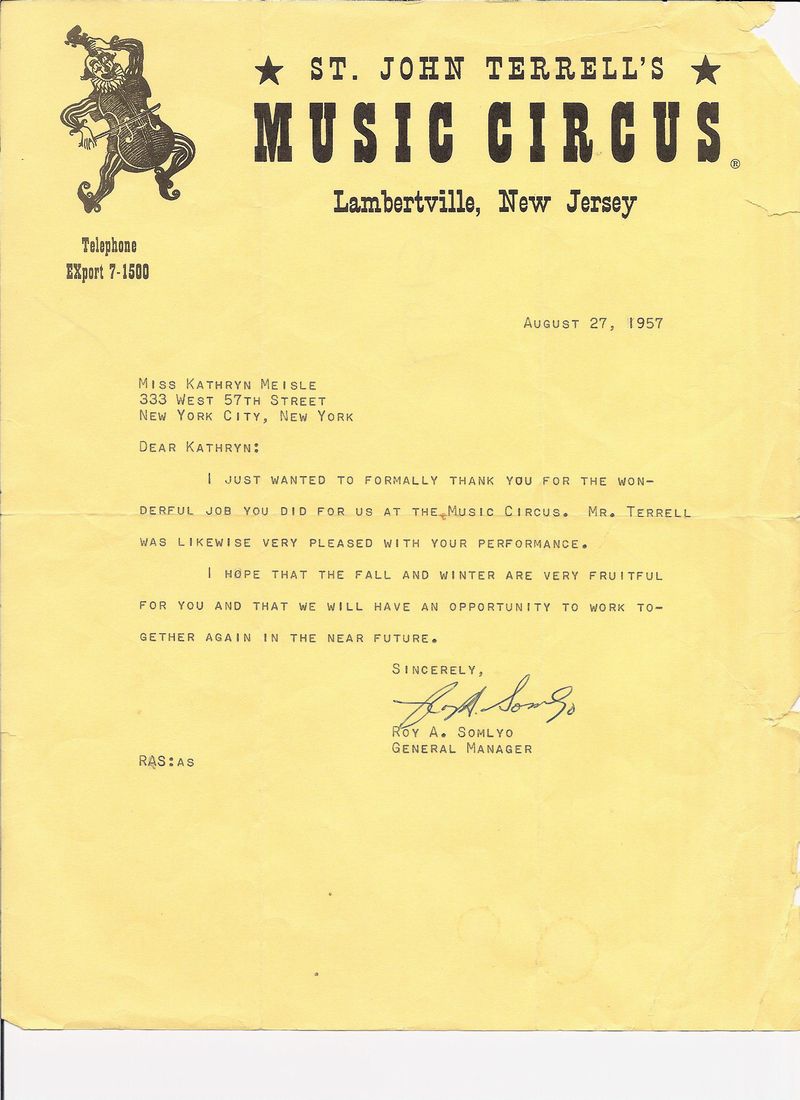The notoriety and fame the Music Circus garnered in its early years attracted many stage and film stars to perform on its circular stage in musicals and plays. Many other stars performed in concert. Go to the Concerts Section
Wilbur Evans
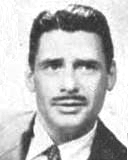
"The Chocolate Soldier" (Lieutenant Bumerli) 1949
"Naughty Marietta" 1949
Wilbur "Wib" Evans (August 5, 1905 - May 31, 1987) was an American actor and singer who performed on the radio, in opera, on Broadway, in films, and in early live television.Wilbur "Wib" Evans (August 5, 1905 - May 31, 1987) was an American actor and singer who performed on the radio, in opera, on Broadway, in films, and in early live television.
Wilbur Evans was acclaimed by the critics at Carnegie Hall in 1942 as the outstanding singing actor discovery of the generation. He created the leading roles on Broadway in "Mexican Hayride" and "Up in Central Park," was starred on radio and television, and triumphantly trouped the country in concerts and operatic revivals. He met Susanna Foster in Hollywood when they starred in "Naughty Marietta" in the Los Angeles Civic Light Opera Company production. They soon married and had two sons, Phillip and Michael.
As stars of the Music Circus, in a different musical each week, Wilbur Evans and Susanna Foster have won thousands of new friends and all-out praise of the press
Read more at wikipedia.org
Susanna Foster
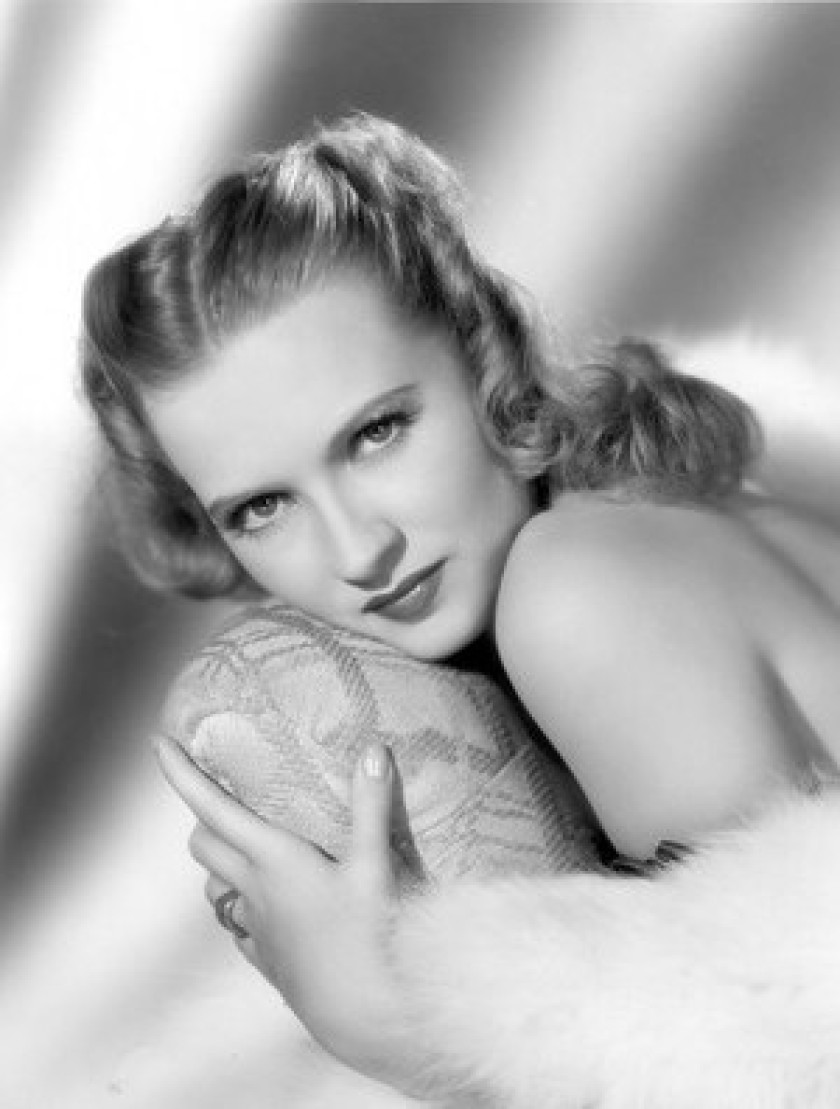
"The Chocolate Soldier" (Nadina Popoff) 1949
"Naughty Marietta" (Marietta) 1949
Susanna Foster (born Suzanne DeLee Flanders Larson, December 6, 1924 - January 17, 2009) was an American film actress best known for her leading role as Christine in the 1943 film version of "Phantom of the Opera."
She was born in Chicago and grew up in Minneapolis. When she was only 3, she won attention for her ability to mimic popular performers, such as vaudevillian Eddie Foy and actresses Bebe Daniels and Jeanette MacDonald. At 5 she was performing regularly on radio, helping to support her family during the Depression with her earnings of $5 a week.
At 12 she landed a contract with MGM, where studio chief Louis B. Mayer viewed her as a potential successor to singing sensation Deanna Durbin, who was leaving the studio. Foster was groomed for stardom alongside Mickey Rooney and Judy Garland.
She was offered the lead in "National Velvet" but turned it down because she wanted only singing roles. MGM soon dropped Foster, and the part eventually went instead to the young Elizabeth Taylor, whose luminous performance became Hollywood legend. After losing her MGM contract, Foster signed with Paramount, where at 14 she made her film debut opposite Mary Martin and Allan Jones in "The Great Victor Herbert" (1939), a biopic about the renowned composer.
At 19 she jumped to Universal to star in "Phantom of the Opera" with Nelson Eddy. New York Times critic Bosley Crowther wrote that she played and sang "quite pleasingly" and considered her performance one of the few bright notes in the movie. "She had a kind of open quality, a warmth and a vulnerability and sweetness, that came through in addition to the beauty of her voice," Miles Kreuger, president of the Los Angeles-based Institute of the American Musical, said Monday. Kreuger, who knew Foster for many years, described her as a bright but emotionally fragile woman who struggled to raise her sons on her own after her marriage to Evans ended in divorce in 1956.
She made several more pictures at Universal, including "That Night with You," with Franchot Tone, and "The Life of Victor Herbert" with Mary. Martin. Also a horror movie called "The Climax" (1944) with Boris Karloff, but quit Hollywood in 1945 to raise her two younger sisters and take them away from their alcoholic mother.
She married Wilbur Evans, and performed with him in musicals and operettas. They had two sons, Phillip and Michael. She is survived by Michael and two grandchildren.
In her later years, she held a succession of low-paying jobs, including switchboard operator and receptionist. At one point she was homeless and lived in her car. She dreamed of a Hollywood comeback but made only one film after 1945, appearing in a 1992 remake of the 1945 cult classic "Detour."
She died of heart failure at the Lillian Booth Actors Home in Englewood, N.J., according to publicist Dale Olson. She was 84.
Source: Music Circus playbill and season program
Source: LA Times
Mitzi Green
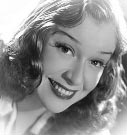
In vaudeville with her parents' act from the age of 3, Mitzi Green rose to popularity in a series of Paramount films in the early talkie era. Sometimes cast in such conventional juvenile parts as Becky Thatcher in "Tom Sawyer" (1930) and "Huckleberry Finn" (1931), Green was given more scope in musicals and comedies in which she regaled audiences with her dead-on impressions of such celebrities as Greta Garbo and George Arliss.
Maturing rather quickly, 14-year-old Green was seen in a grownup soubrette role in "Transatlantic Merry-Go-Round" (1934), the film that closed out the first stage of her Hollywood career. She went on to Broadway, where she starred in the original production of Lorenz and Hart's "Babes in Arms." Green made one more film in 1940, then went back to stage and nightclub work, reemerging on the big screen opposite Abbott and Costello in "Lost in "Alaska" (1951) and Mitzi Gaynor in "Bloodhounds of Broadway" (1952). In 1955, Green co-starred with Virginia Gibson and Gordon Jones in the slapstick sitcom "So This is Hollywood" (1955), in which she played a hoydenish stuntwoman. Mitzi Green died of cancer in 1969 at the age of 48; she was survived by her husband, film director Joseph Pevney.
Source: Hal Erickson, All Movie Guide
Grayson Hall
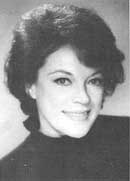
In the summer of 1963, John Huston was casting the film version of Tennessee Williams' play, Night of the Iguana. Almost in spite of herself, Grayson won the pivotal supporting role of Judith Fellowes. It's worth noting that although publicity emphasized the explosive intersection of Richard Burton and the high-powered trio of Ava Gardner, Deborah Kerr and Sue Lyon, the trailer for the film featured no less than three appearances by Grayson (most memorably standing on the beach and shrieking "You beast!" at an oblivious Burton).
Critics were impressed and she won an Oscar nomination which in turn led to still more attention for her within the industry. A publicity photo snapped the day after the nominations were announced pretty much sums up Grayson's own ambivalent attitude to the whole affair: it shows Grayson, at an antiques fair, siting down the barrel of a very sturdy-looking rifle pointed directly at the photographer. The star shooting the paparazzi.
Source: members.aol.com/lynn1dave
www.graysonhall.net
Edward Everett Horton
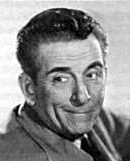
Often mistaken for an Englishman, actor Edward Everett Horton was actually born in Brooklyn, the son of newspaper print-machine operator. Horton left Oberlin College in his junior year to pursue his dreams of becoming a stage actor, receiving his training at Brooklyn's Polytechnic Institute and then at Columbia University, where he made his first stage appearance in a variety show.
Knocking about professionally as a chorus boy and stage manager, Horton was given his first leading role as a Japanese prince (hardly typecasting for the gangly, puck-faced actor) in the venerable stage melodrama "The Typhoon." Thereafter, despite a few forays into heavy drama, Horton specialized in comedy, occasionally giving movies a try as a light leading man; his film debut was 1921's "Too Much Business." By the end of the 1920s, Horton was managing the Majestic Theatre in Los Angeles, casting his fellow character actors in the meaty, demanding roles often denied them by the movies. He also helped train several silent film leading men and ingénues to use their voices properly in stage work, to prepare them for talking pictures.
Horton was pretty much locked into second lead and supporting roles in the 1930s and 1940s, most notably in the delightful Fred Astaire-Ginger Rogers musicals at RKO. After a decade-long concentration on theater, usually touring as star of the reliable stage vehicle "Springtime for Henry," Horton resumed his film career in 1957, which he maintained until his death. In the 1950s and 1960s, Horton suddenly found himself a favorite of the younger set thanks to his narration of the "Fractured Fairy Tales" segment on the legendary TV cartoon series "Rocky and His Friends," and his semi-regular appearances as medicine man Roaring Chicken on the western situation comedy "F Troop."
Source: Hal Erickson, All Movie Guide
Larry Kert
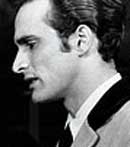
"Pal Joey" (Joey) 1961
Kert was born in Los Angeles, CA. He attended Los Angeles City College. As a teenager he worked at breaking wild horses to saddle, which led to a teen-age career as a stunt man, stand-in, and extra in well-nigh 100 films. Kert's first professional credit was as a member of a theatrical troupe called the "Bill Norvas and the Upstarts" in the 1950 Broadway revue "Tickets, Please!" In 1955, while dancing in the chorus in the Sammy Davis, Jr. show "Mr. Wonderful," Kert was recommended by his fellow dancer and friend Chita Rivera, who eventually won the role of Anita in "West Side Story," to audition for West Side Story.
After "West Side Story, Kert was seen in "A Family Affair" for three months in early 1962. He was a member of the cast of the infamous ill-fated musical version of Truman Capote's novella, "Breakfast at Tiffany's," which closed during previews in December 1966. His next project, "La Strada" (1969), closed on opening night. He often worked in Off-Broadway, theatre workshops, and taught dance. However, replacing the original actor who fell ill, he played the male lead Cliff in the first run of "Cabaret" for most of its run.
His next big break came as a replacement for Dean Jones as the lead in Stephen Sondheim's "Company" (1970). In 1977, he won the role of Liza Minnelli's leading man in '"Happy Endings," a movie within the movie New York, New York. In 1975, he appeared in "A Musical Jubilee," a revue that lasted barely three months. "Rags" (1986) closed two days after it opened. In his final show, "Legs Diamond" (1988), he was a standby for star Peter Allen.
Kert made brief appearances in the feature films Gentlemen Prefer Blondes (1953) and New York, New York (1977). His television credits included guest appearances on The Sorcerer's Apprentice (Alfred Hitchcock Presents), Kraft Suspense Theatre, The Bell Telephone Hour, Combat!, Hawaii Five-O, Kojak: Conspiracy of Fear (1973), and Love, American Style. He appeared several times on The Tonight Show Starring Johnny Carson.
Kert's last stage appearance came in a touring company of "La Cage aux Folles" but he missed performances because of illness. Kert died, at 60, in his Manhattan home from complications of AIDS in 1991.
Bert Lahr
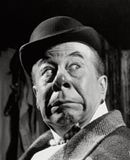
Bert Lahr, born Irving Lahrheim, (August 13, 1895 - December 4, 1967) was a Jewish-American comic actor. Fittingly born a "Leo" in New York City, he is best remembered today for his role as the Cowardly Lion (and the farmworker "Zeke") in the classic 1939 movie The Wizard of Oz, but known during his life for a career in burlesque, vaudeville and Broadway.
Dropping out of school at the age of fifteen to join a juvenile vaudeville act, Lahr worked his way up to top billing on the Columbia Burlesque Circuit. In 1927 he moved to Broadway plays as a comic actor, performing classic routines such as "The Song of the Woodman" (which he later reprised in the film "Merry-Go-Round of 1938"). Among Lahr's theatrical hits in the 1930s included co-starring with Ethel Merman in "DuBarry Was a Lady."
Aside from The Wizard of Oz, his movie career never caught on, possibly because his gestures and reactions were too broad for that intimate medium. His later life was troubled, although he made the transition to straight theatre, particularly in a much-praised version of Waiting for Godot, in which he played Estragon to Tom Ewell's Vladimir. Lahr thought of himself as the "top banana" in the production, telling Ewell "not to crowd him" (when he learned of this, Beckett complained that the play was being taken away from his "major character", Vladimir).
He also performed in television commercials, including a memorable series for Lay's potato chips during its long-running "Betcha can't eat just one" campaign. Among other Broadway roles, Lahr played Queen Victoria in a sketch from the musical "Two on the Aisle." He also performed as Moonface Martin in a television version of "Anything Goes" with Ethel Merman reprising her role as Reno Sweeney and Frank Sinatra as Billy Crocker. In the 1950s, Lahr supplied the voice of an animated bloodhound in "Old Whiff", a short cartoon produced by Mike Todd which featured the olfactory Smell-O-Vision process developed for Todd's feature film "Scent of Mystery."
The more soft-spoken aspect of Lahr's broad-ranging vocal characterization of the Cowardly Lion was a strong influence on the voice used for the Hanna-Barbera cartoon character Snagglepuss.
Lahr died in 1967 in the middle of filming The Night They Raided Minksy's, forcing producers to use a double in several scenes. Fittingly, this last role was as a burlesque comic.
His son, New Yorker theater critic John Lahr, wrote a biography of his father's life titled Notes on a Cowardly Lion.
Dorothy Lamour
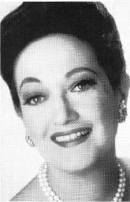
In Washington's Smithsonian Institution, right next to Lindberg's Spirit of St. Louis, there is a special display of Dorothy Lamour's original sarong. Miss Lamour, who first won international fame as The Sarong Girl, has now exchanged this piece of gaily-colored cloth for a turn-of-the-century bustle with her acclaimed portrayal the irresistible matchmaker Dolly Gallagher Levi. After more than 50 motion pictures and countless radio and television appearances, she is making her legitimate stage debut in "Hello, Dolly!" direct from a highly successful engagement at the Riviera Hotel in Las Vegas.
Miss Lamour received her first taste of show business in her own hometown, when she won the Miss New Orleans beauty pageant at the age of 14. At the advice of friends who thought her singing ability deserved encouragement, she and her mother moved to Chicago, where she was chosen as vocalist for the Herbie Kay Orchestra. Kay soon recommended her to a fraternity brother, Rudy Vallee, and she sang with Vallee's orchestra at several major hotels, including New York's Waldorf-Astoria. A solo engagement at Sherman Billingsley's Stork Club quickly led to an NBC radio contract on the program "The Dreamer of Songs," which brought her to Hollywood.
Paramount Pictures had tested over 250 girls for the lead in "The Jungle Princess," but was on the verge of shelving the project for want of a suitable type. Miss Lamour turned out to be just the girl they were looking for and she was signed to a long-term contract, receiving top billing in her first movie. Samuel Goldwyn, then borrowed her for his studio and arranged for her to replace his original leading lady. The combined success of the two films was phenomenal and made her Hollywood's brightest new star.
Source: Music Circus Website Archives
Julius La Rosa
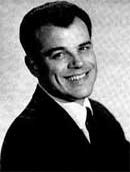
Born January 2, 1930, New York City, New York, USA. La Rosa grew up listening to records by singers such as Frank Sinatra and bands including Tommy Dorsey and Glenn Miller. After finishing high school he joined the US Navy and during this period of service he sang with the US Navy Band in Washington, DC, where he was heard by Arthur Godfrey who told him to come and see him when he was discharged. La Rosa did so and within a week of leaving the navy, he was appearing on Godfrey's television show. For two years from November 1951, La Rosa was a member of the hugely popular CBS TV series Arthur Godfrey And His Friends.
Although kept very busy with the Godfrey show and other in-between engagements, La Rosa also took singing lessons with Carlo Menotti. Starting in 1952, he also made records for Cadence Records, a company formed by Godfrey's orchestra leader, Archie Bleyer, apparently for the express purpose of recording La Rosa. His first release was "Anywhere I Wander' and it went straight into the national Top 30. His follow-up was less successful but the third, 1953's, "Eh, Cumpari," reached second spot on the charts and La Rosa won awards and acclaim.
On 19 October 1953, however, shortly before the record's release, La Rosa was fired on air by Godfrey. This action lowered the public's esteem of Godfrey, and his career soon afterwards went into decline. Meanwhile, the incident served to boost awareness of the singer and his next release, "Domani (Tomorrow)," was another hit. A string of hits followed in the late 50s, including "Suddenly There's A Valley," "Lipstick And Candy And Rubbersole Shoes," "Get Me To The Church On Time," and "Torero."
Kathryn Meisle
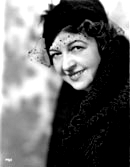
Born: October 12, 1899 - Philadelphia, PA
Died: January 17, 1970 - New York, NY
The American contralto, Kathryn Meisle, began her music studies already when she was five years old, and gave concerts when she was nine. When she was 15 years old, she played as pianist in a silent movie cinema in Philadelphia. In 1912 she became a soloist at the Christian Episcopal Church in Philadelphia and sang then also in a vocal quartet. In 1915 she won the National Singing Competition, which was organized by the National Federation of Music Clubs, and decided thereupon to study singing, which she began in Philadelphia.
In 1920 Kathryn Meisle made her debut as concert alto singer with the Minneapolis Symphony Orchestra. In 1923 she made her stage debut at the Opera of Chicago as Erda in Siegfried. Until 1935 she appeared with big success in Chicago as Maddalena in Rigoletto, as Preziosilla in Verdi's La forza del destino, as Madelon in Andrea Chénier by Giordano, later as Azucena in Troubadour, and as Cieca in La Gioconda by Ponchielli.
During those years she also made guest appearances in San Francisco (debut in 1926 Aida as Amneris) and in Los Angeles, and in 1930 undertook a concert tour to Europe. In 1935 she started an engagement at the Metropolitan Opera in New York (start role: Amneris in Aida), to whose ensemble she belonged until 1938, and performed there roles as Azucena, Fricka, Erda and Waltraute in The Ring of the Nibelung. She sang also in operettas and created, among other things, in 1950 in New York the musical Roberta by J. Kern.
Kathryn Meisle had a great concert career, particularly as oratorio soloist. She sang at the Festivals of Cincinnati, Worcester, Springfield and Newark and became particularly estimated as soloist in Matthäus-Passion (BWV 244) by J.S. Bach.
Recordings: HMV Victor acoustic photographs of Ballads; electrical recording of Matthäus-Passion (BWV 244) under Serge Koussevitzky); Some records on Decca and Columbia; Private recordings from the Metropolitan Opera, among them on ANNA-Records scenes from Götterdämmerung.
Source: Operissimo Website, English translation by Aryeh Oron (May 2004). Contributed by Aryeh Oron (May 2004)
Bill Meisle, Ms. Meisle's nephew, remembers.
Alan Mobray
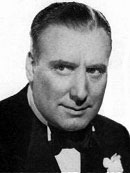
Alan Mowbray was of the stiff-upper-lip school of British actors. He was tall, of rigid posture, well groomed with an aristocratic air about him and excellent diction. He was often cast as British or European gentlemen, butlers, doctors, aristocrats and Royalty. He was born Cedric Alan Mowbray on August 18, 1896 in London, England. He started acting on the English stage and eventually toured the U.S. with his company the Theatre Guild from 1923-29. He was an occasional screen writer but gave it up for acting.
He became a naturalized U.S. citizen in 1933. He was married to Lorraine Carpenter and had two children. He was a founding member of the Screen Actors Guild. His credits include over 100 films a well as many TV roles. He died of a heart attack on March 25, 1969 in Hollywood, California at age 72.
Source: www.dougmacaulay.com
Photo Source: freespace.virgin.net
Molly Picon
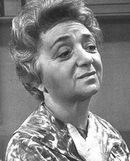
Molly Picon (1898-1992) had a long and distinguished stage career and was considered to be the pre-eminent actress of Yiddish theatre in the United States.
She was brought up in Philadelphia where, a the age of six, she began performing in tram cars and local nickelodeons. She left school in 1915, determined to have a stage career and was eventually cast as Winter in "The Four Seasons," a traveling English-language vaudeville production. Six month later, when the company reached Boston, the city was in the grip of an influenza epidemic. The only theatre still open was the Boston Grand Opera House, which was presenting Yiddish theatre. She applied for an acting job and was immediately hired.
The following year, she and her husband embarked on a two-year European tour of Yiddish plays. Although only 4ft. 11in. and weighing less than 100 pounds, she had enormous stage presence. Further successes followed and, in the 1930s, she delighted audiences not only in the theatre but during her extensive tours of Europe and South America.
During and after the Second World War, she performed extensively, not only in theaters but also for the sick, American troops, and Jewish Holocaust survivors. Although remaining strongly committed to the Yiddish language and culture, as the Yiddish theatre declined, she sought to expand her roles. In 1960, she performed in a successful London production of Majority of One. She went on to star in the Broadway hit Milk and Honey in which she played an American widow looking for a new husband in Israel. She was then played an Italian mother opposite Frank Sinatra in Neil Simon's screen adaptation of Come Blow Your Horn (1963). For this part "in her first Hollywood film" she was nominated for an Oscar. She continued to perform well into her eighties.
Source: www.collectorspost.com
Photo Source: www.comedystars.com
Joyce Randolph
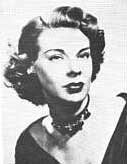
Best known as "Trixie Norton" on The Honeymooners, Joyce Randolph was one of four actresses to play the role of "Trixie." Born Joyce Sirola in Detroit, Michigan, October 21, 1925, her acting career began at the age of nineteen when she joined a touring company of the play "Stage Door." She made her Broadway debut in "A Goose for the Gander," and got involved with television during its earliest days. She first worked with Jackie Gleason when he appeared on the TV series "Cavalcade of Stars."
Source: www.what-a-character.com
Source: www.honeymooners.net
Sylvia Sidney
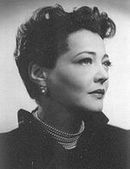
Sylvia Sidney (born Sophia Kosow in Bronx, NY August 8, 1910), whose career spanned some seven decades, worked with director Tim Burton in Beetlejuice. She established her screen persona as a Depression Era working-class heroine in such films as Dead End, Street Scene, An American Tragedy, Fury, and Alfred Hitchcock's Sabotage. After retiring from movies in the mid-1950s to focus on her stage work, she returned to the big screen in 1973's Summer Wishes, Winter Dreams, which earned her Academy Award and Golden Globe nominations. Since then, Sidney appeared in such films as God Told Me To, I Never Promised You a Rose Garden, Damien: Omen II, Hammett, and Used People, and on television in such acclaimed telefilms as Finnegan Begins Again, An Early Frost, Shadow Box, and Pals. Ms. Sidney died in 1999.
Source: filmbug.com/
Photo Courtesy: Library of Congress
Bert Wheeler
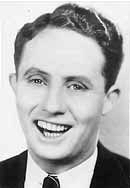
"Ziegfeld Follies" 1959
"Show Boat" (Captain Andy) 1961
"Show Boat" (Captain Andy) 1964
Born Albert Jerome "Bert" Wheeler (April 7, 1895 - January 18, 1968) he acted on stage since boyhood. In his early 20s he and his wife headlined as a vaudeville comedy team; several years later they became Broadway stars in The Ziegfeld Follies. In 1927, Ziegfeld teamed him with Robert Woolsey in the Broadway musical Rio Rita; they reprised their roles in the musical's film version (1929), launching a screen career as a very successful comedy team until Woolsey's death in 1938. Wheeler appeared in Broadway shows and on the road, and also made a few more films. He was a regular on the '50s TV series Brave Eagle. In the '60s he performed in New York and Las Vegas nightclubs.
Source: entertainment.msn.com
Billie Worth
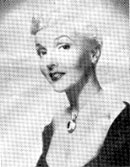
"Bells Are Ringing" (Ella Peterson) 1959
Ms. Worth was an international star, appearing in the title role in the London production of "Call Me Madam." On Broadway she starred opposite Joe E. Brown in "Courtin" Time," and also played Nellie Forbush in South Pacific. She was featured in "Seven Lively Arts," "Very Warm for May," "Jackpot," and Higher and Higher." Miss Worth starred as Annie Oakley in the national company of "Annie Get Your Gun."
Her other Broadway credits include "Thumbs Up!" (1934), and "Bright Lights of " (1943). In 1953, she was called "the toast of the British Isles" for her performance as leading lady in a London production of Call Me Madam that ran for 18 months. She also played in "Anything Goes" in London and in five musical comedies in Australia. She performed in American regional theaters, including the Pittsburgh Civic Light Opera and Muny Opera in St. Louis, and she directed some regional productions.
Worth married actor/director Donald Burr. In the early 1970s, she sold real estate.
Source: Music Circus Playbill
Source: wikipedia.org/
